Abstract
A marker locus closely linked to a disease locus is often useful for genetic counseling provided that a counselee is heterozygous at both disease and marker loci. Furthermore, the linkage phase of these genes in the counselee must be known. When the linkage between the disease and marker loci is very close, one often finds linkage disequilibrium between the loci. To evaluate the effect of such nonrandom associations on the utility of linked marker genes for genetic counseling, the proportion of informative families is studied for X-linked recessive and autosomal dominant diseases. This proportion is higher for X-linked genes than for autosomal genes, if other factors are the same. In general, codominant markers are more useful than dominant markers. Also, under appropriate conditions, the proportion of informative families is higher when linkage disequilibrium is present. The results obtained in this paper are useful for evaluating the utility of polymorphic restriction endonuclease cleavage sites as markers in genetic counseling.
Full text
PDF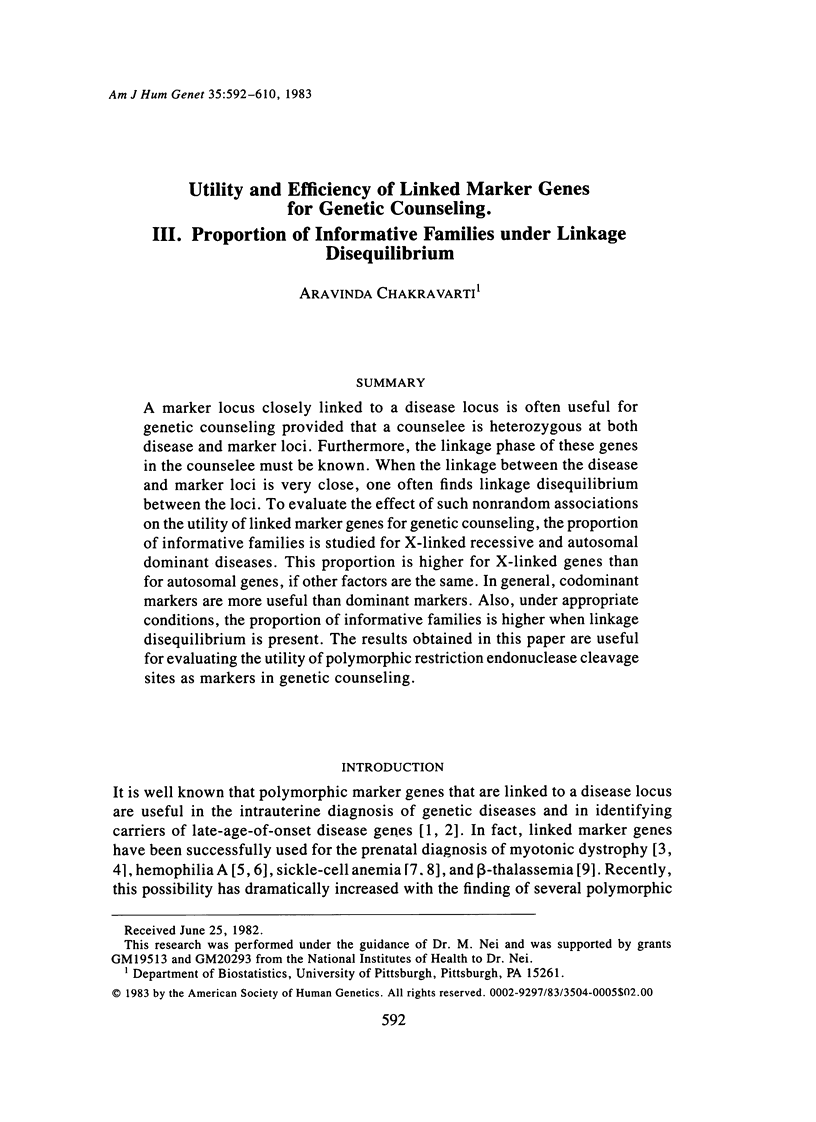
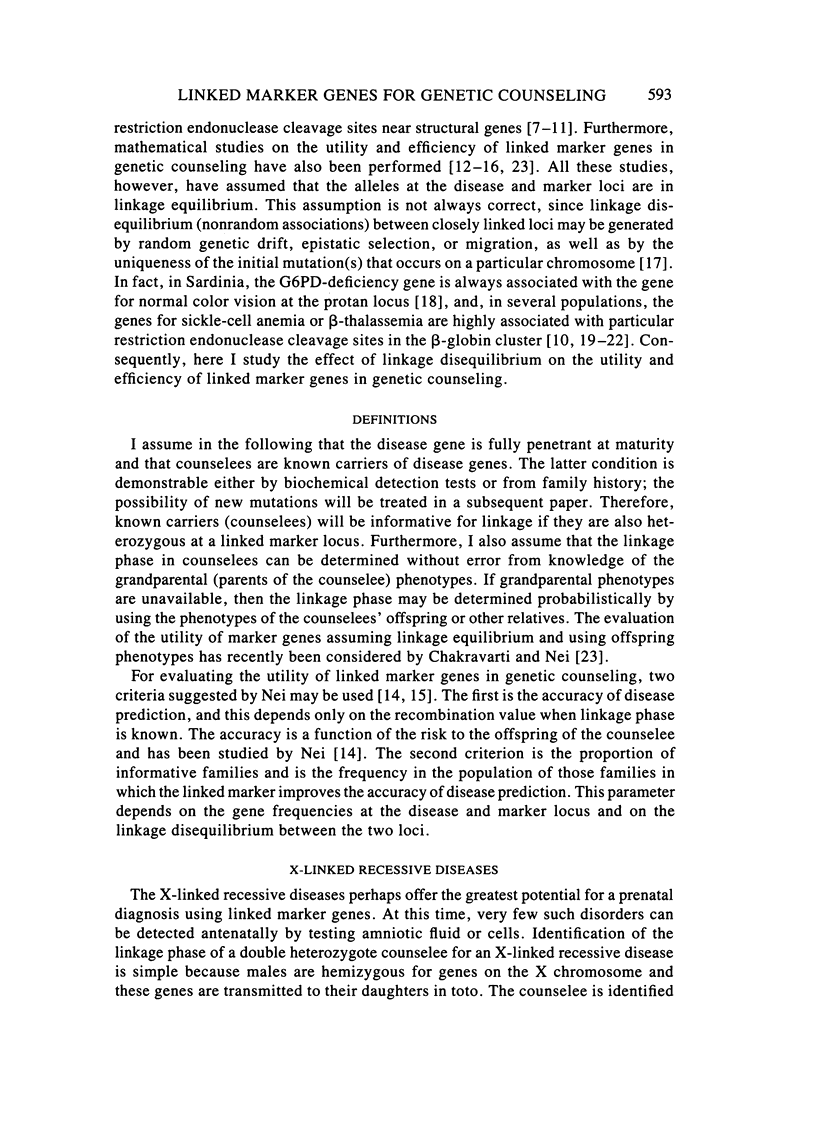
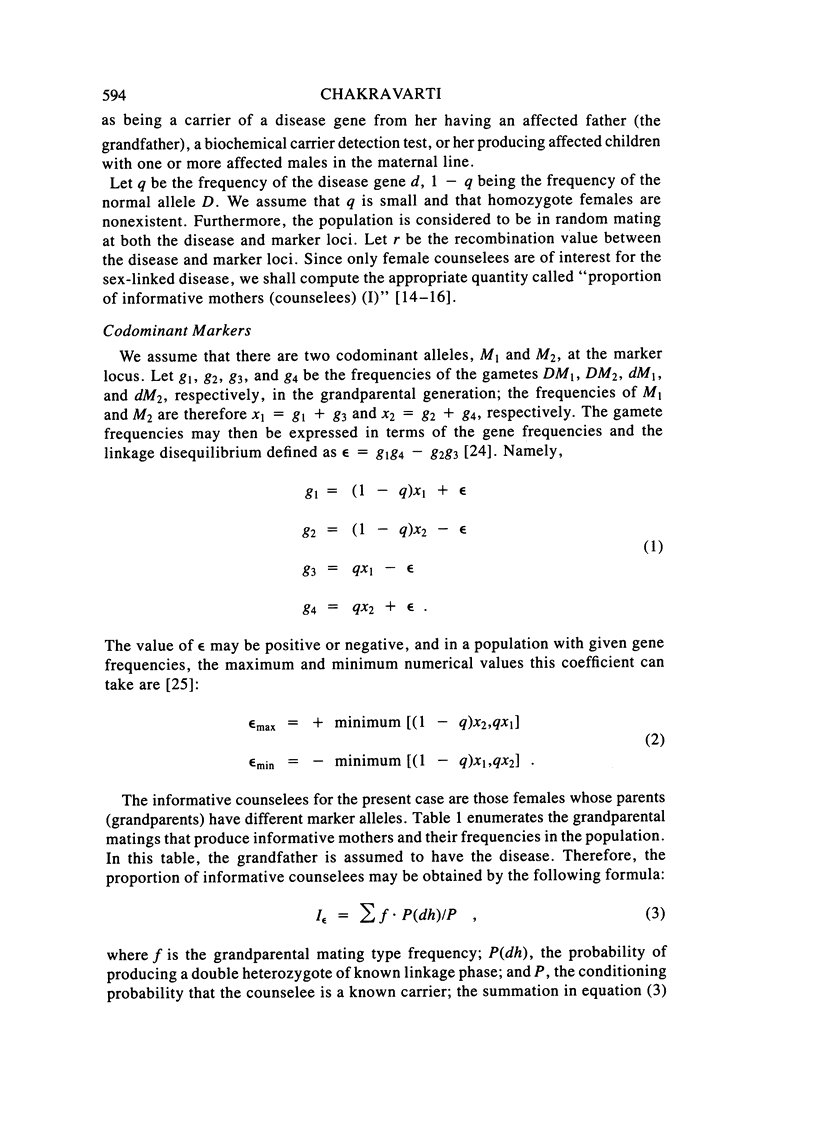

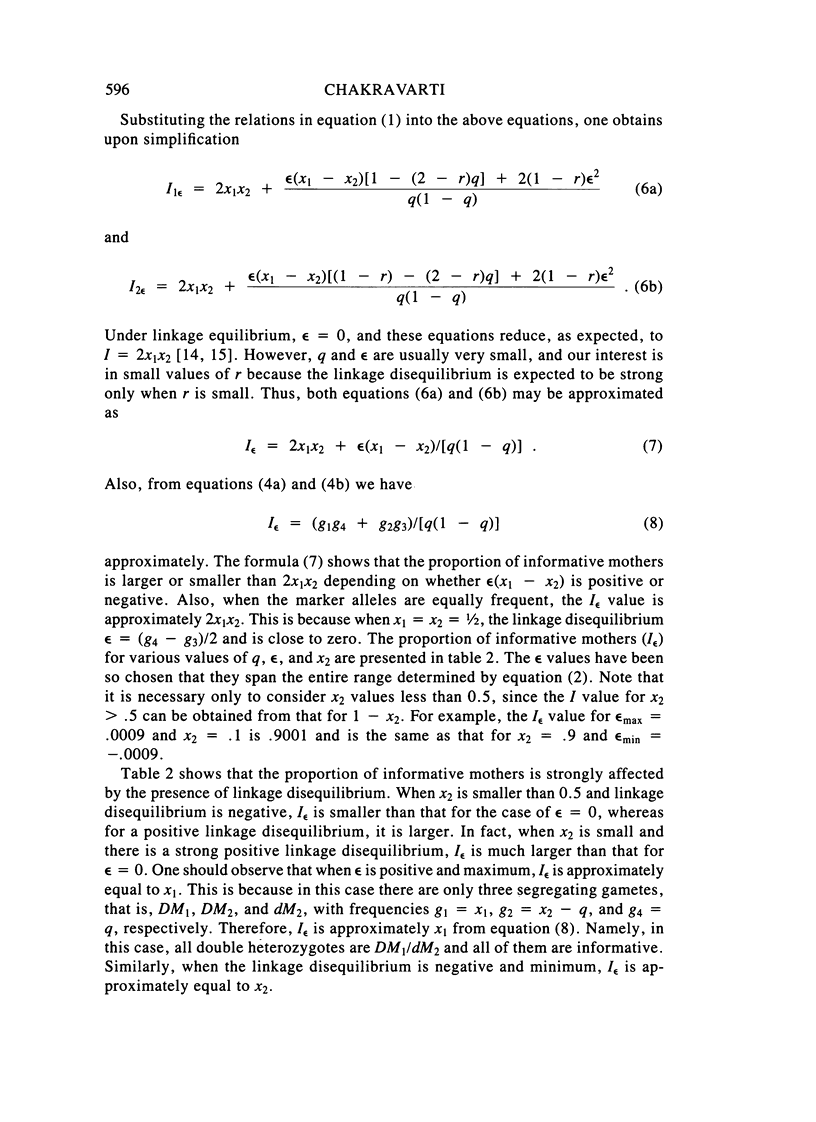
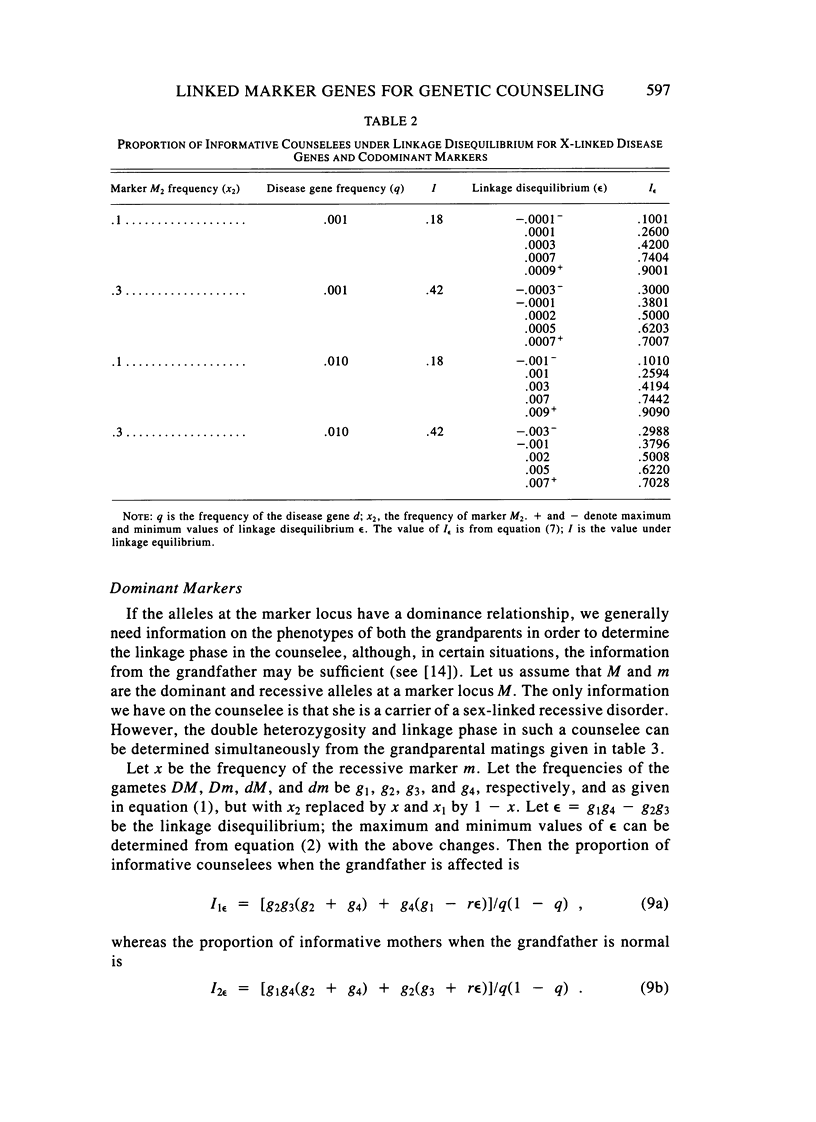
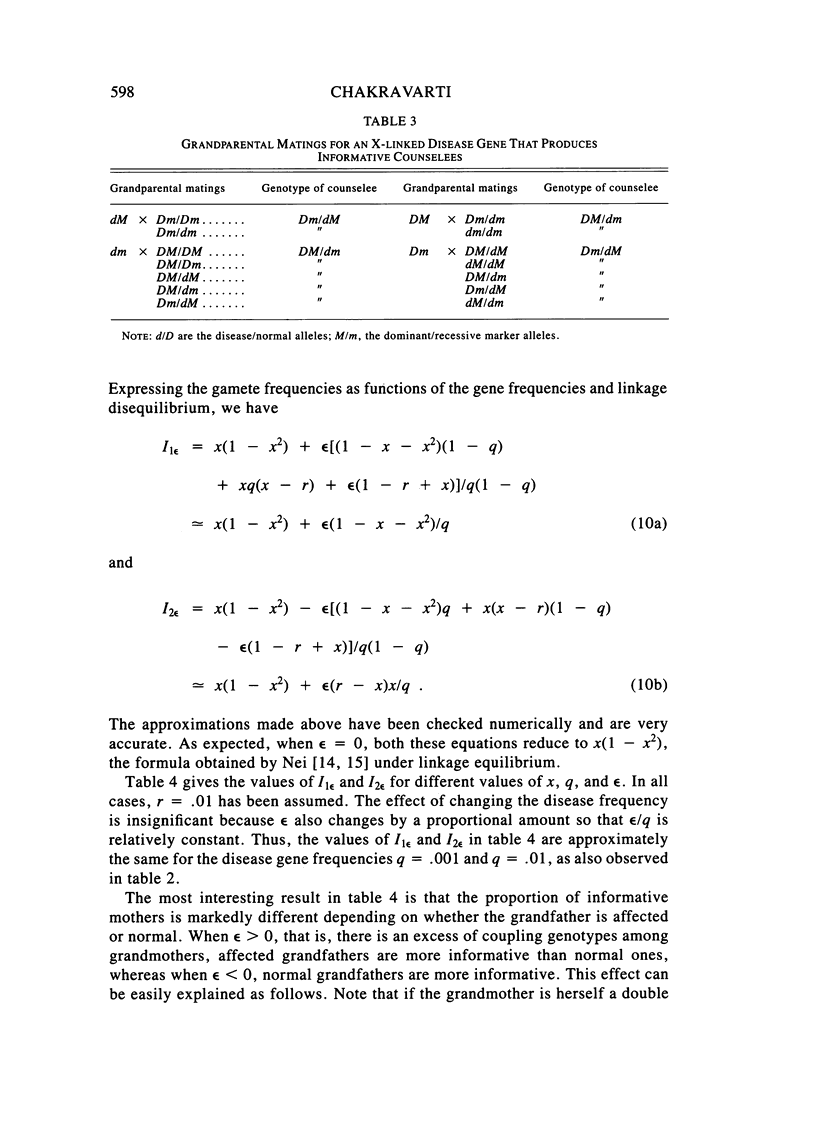
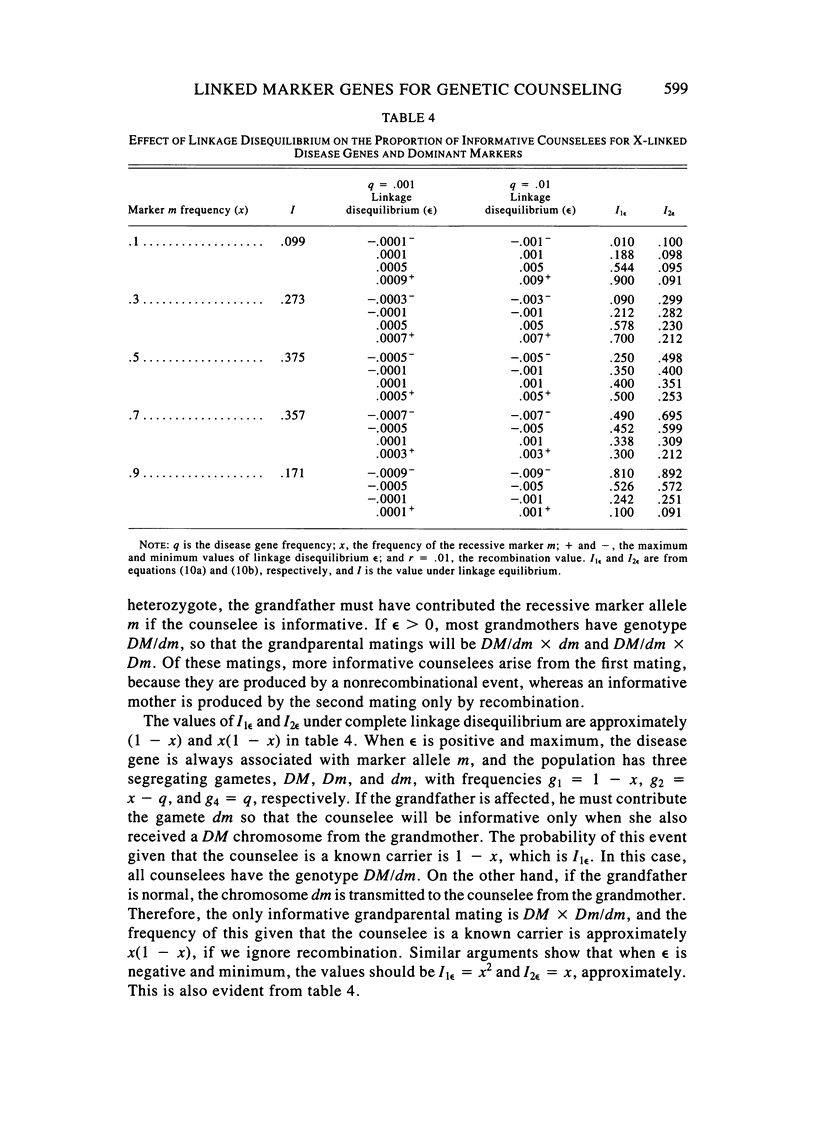
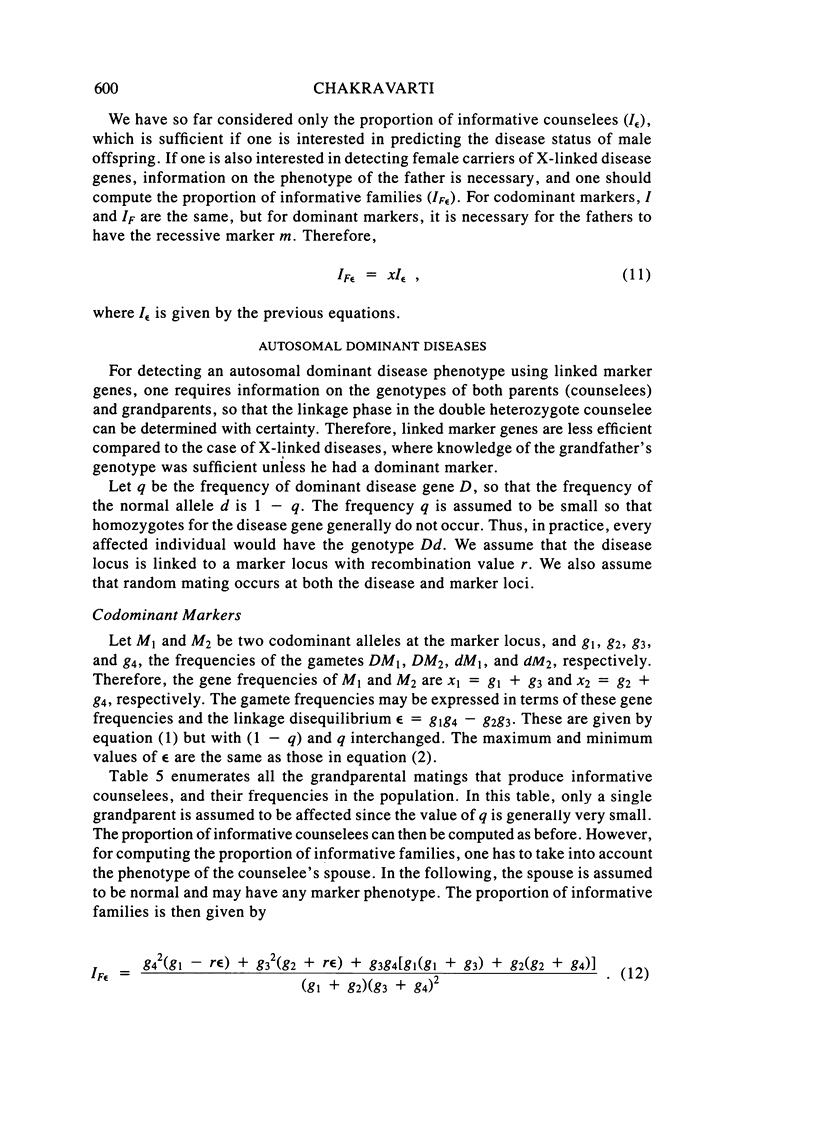
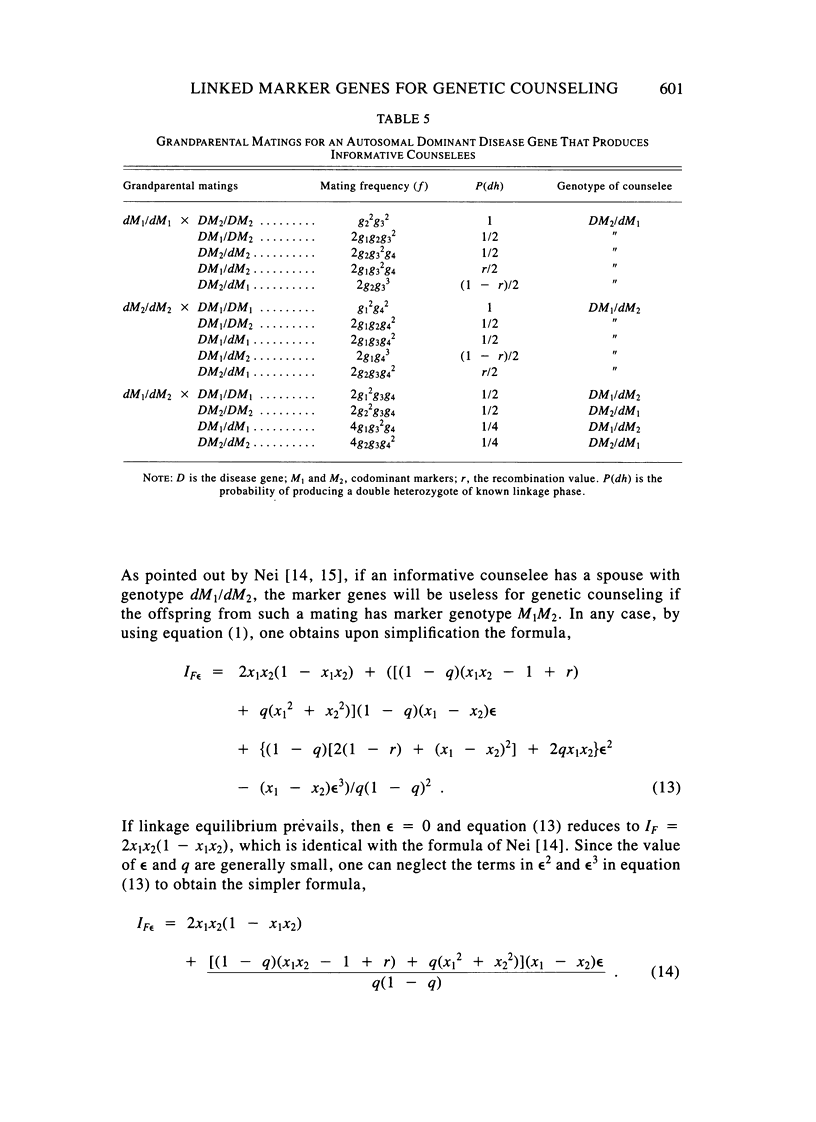
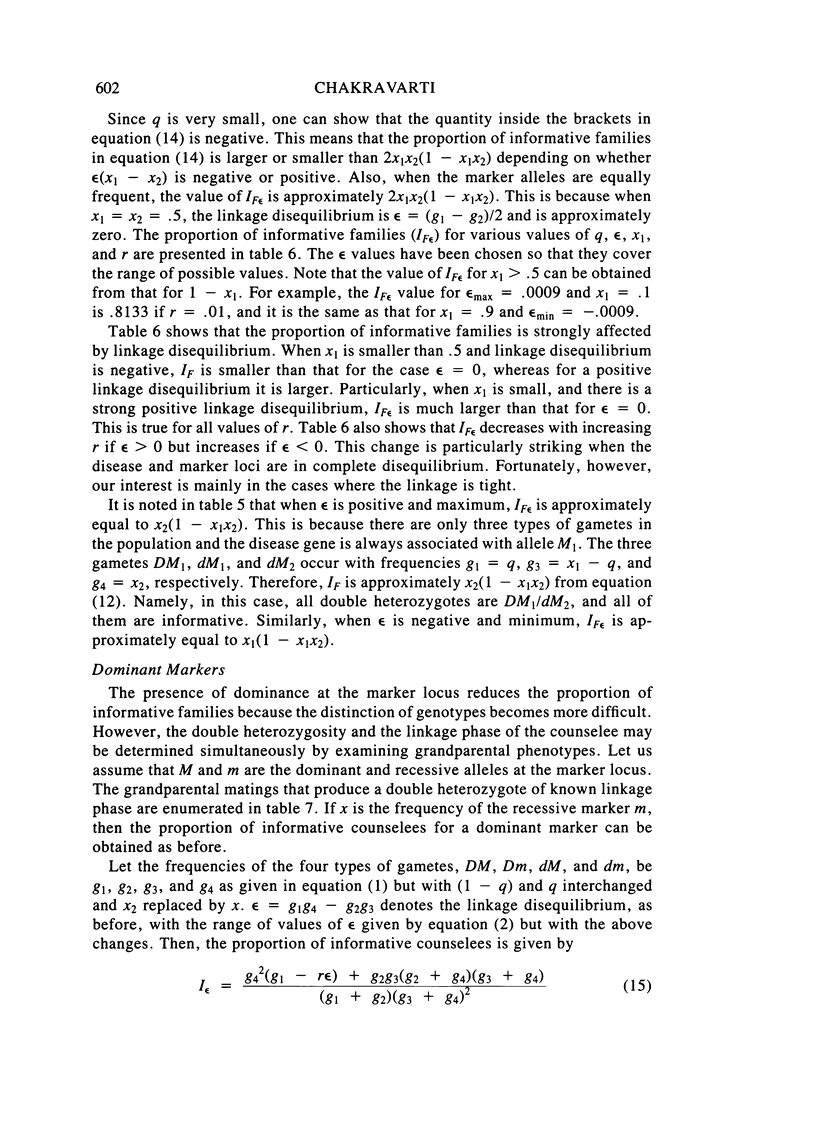
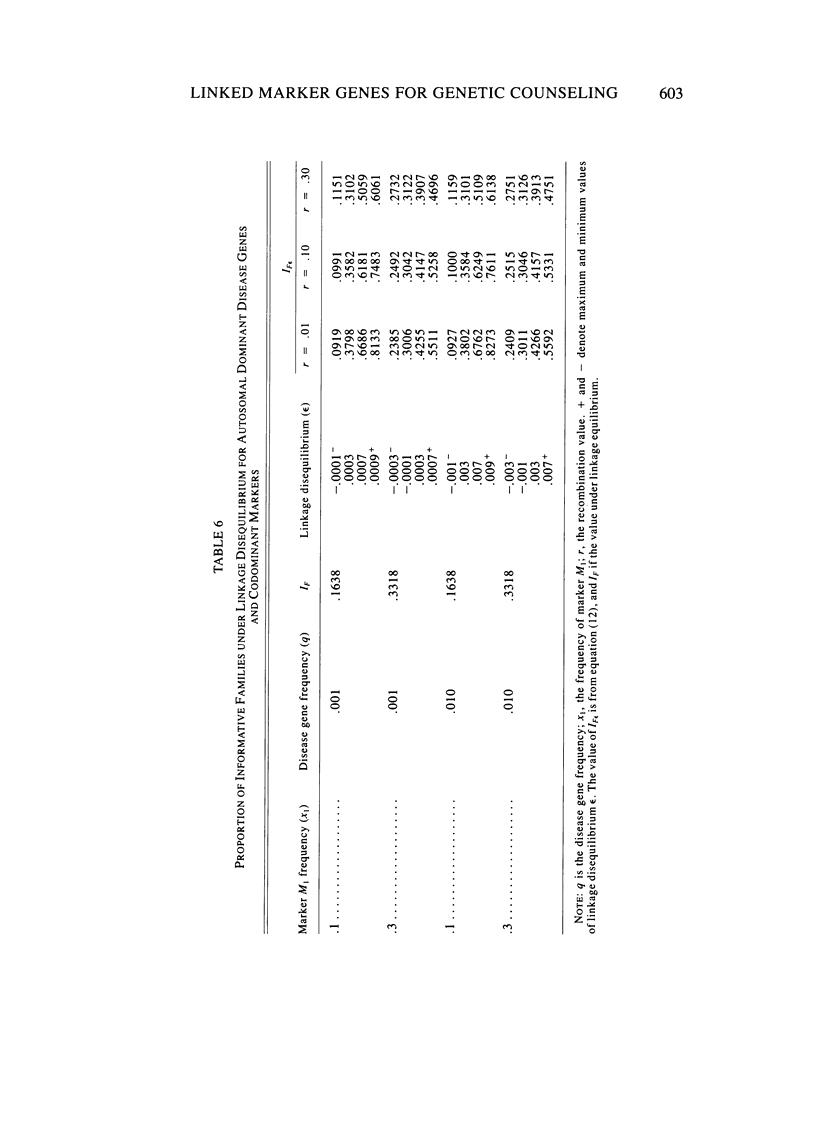
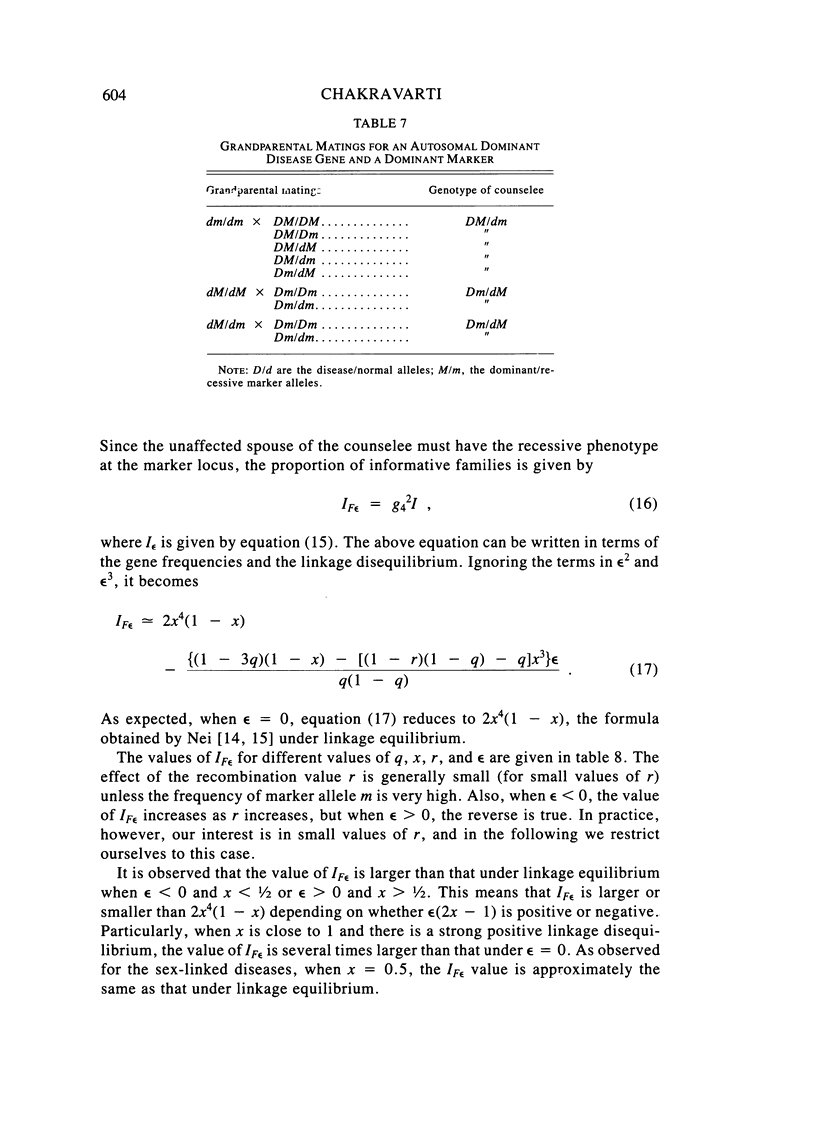
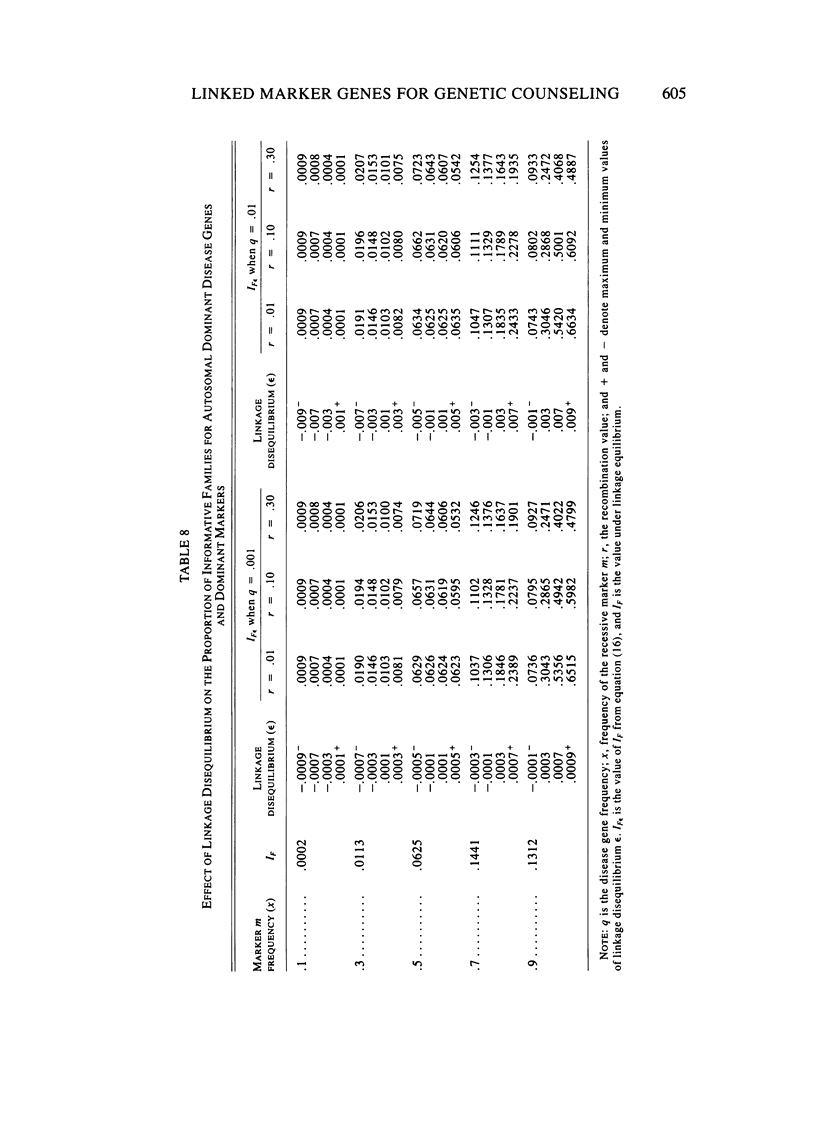
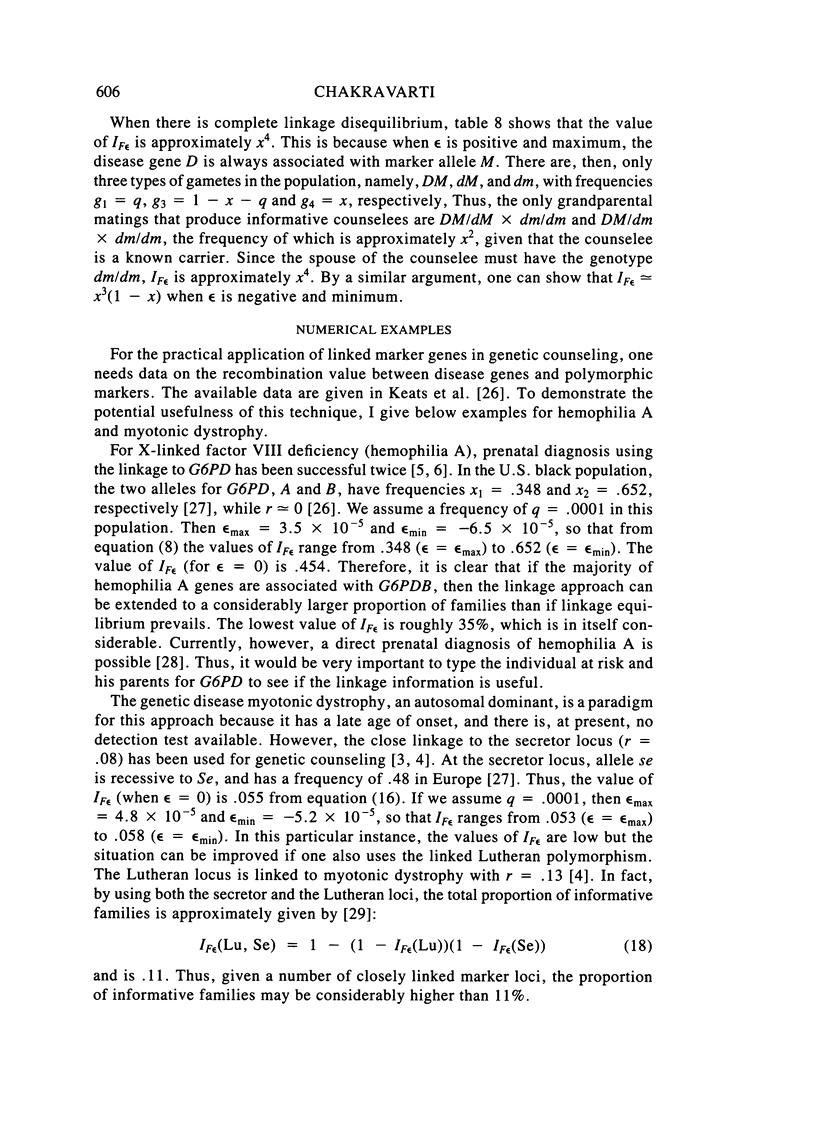
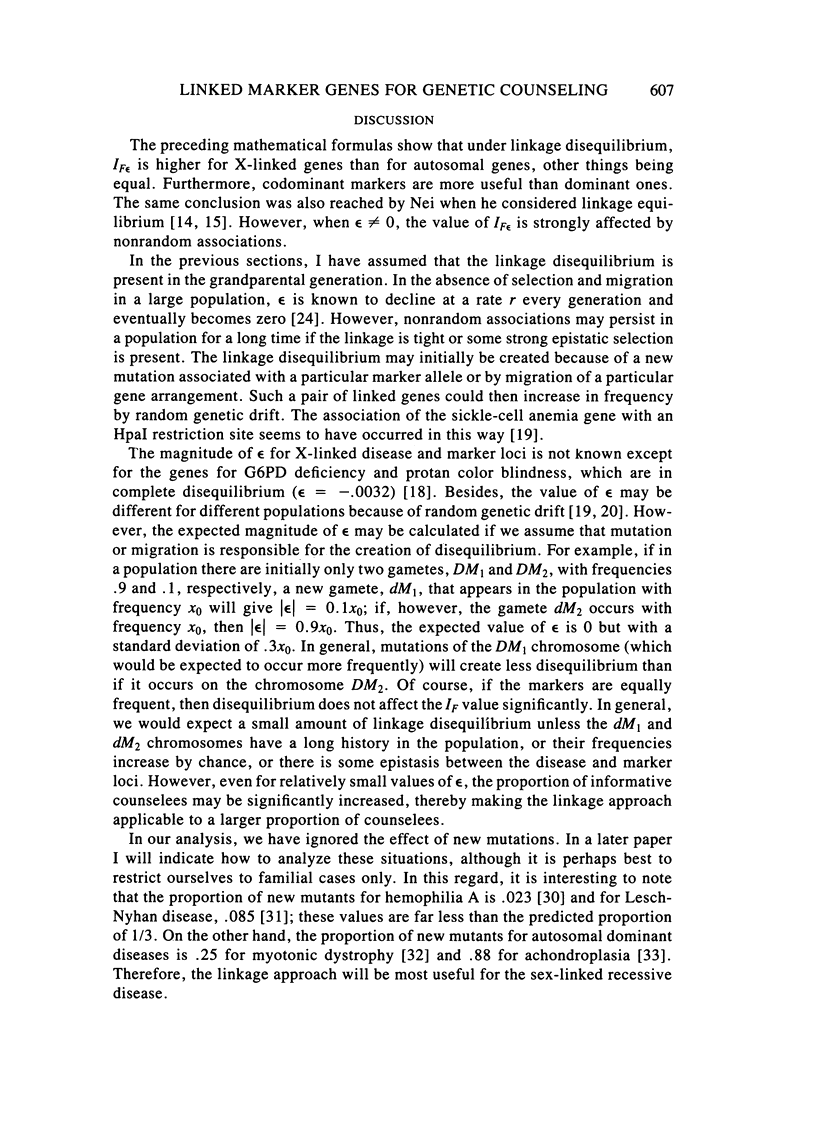
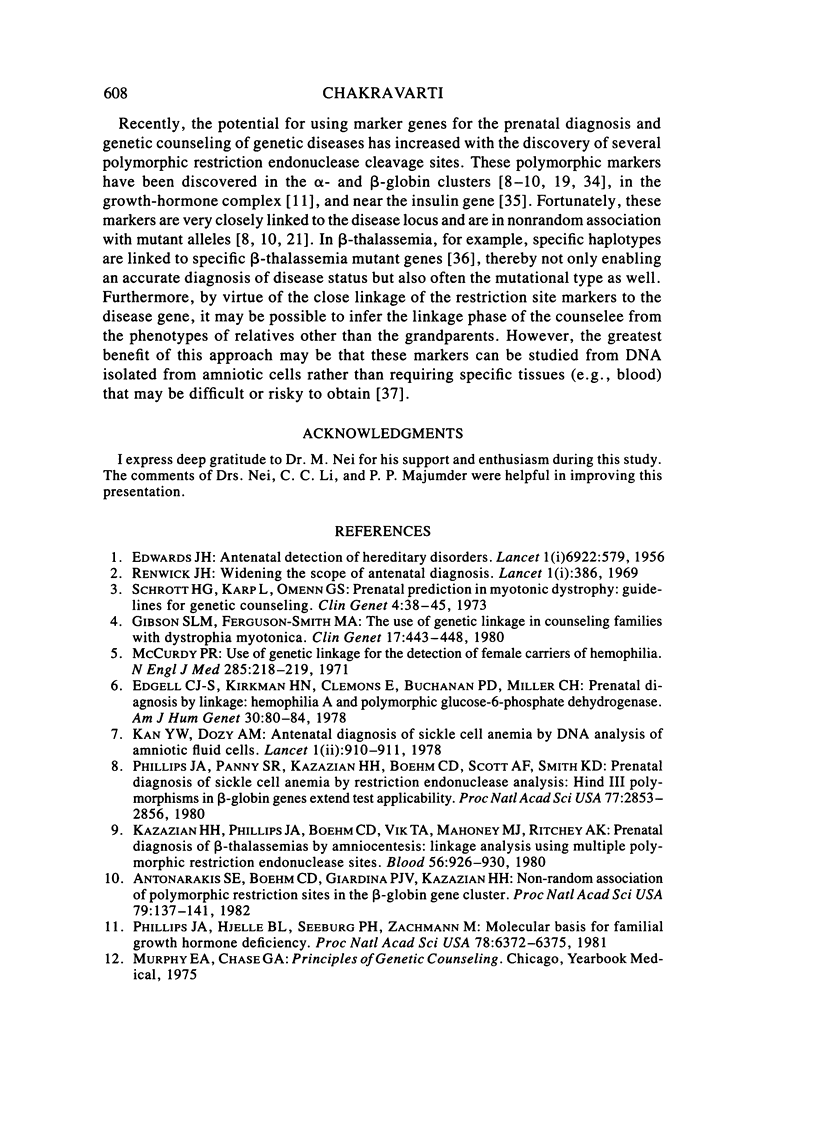
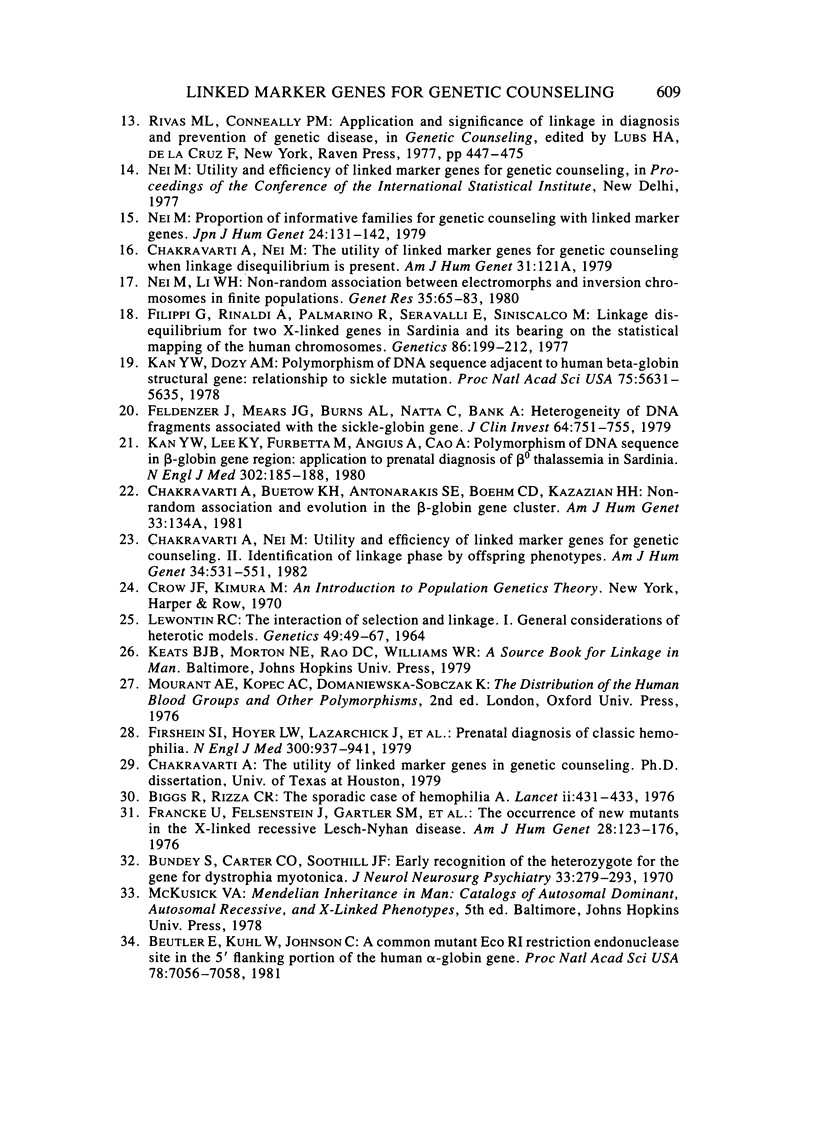
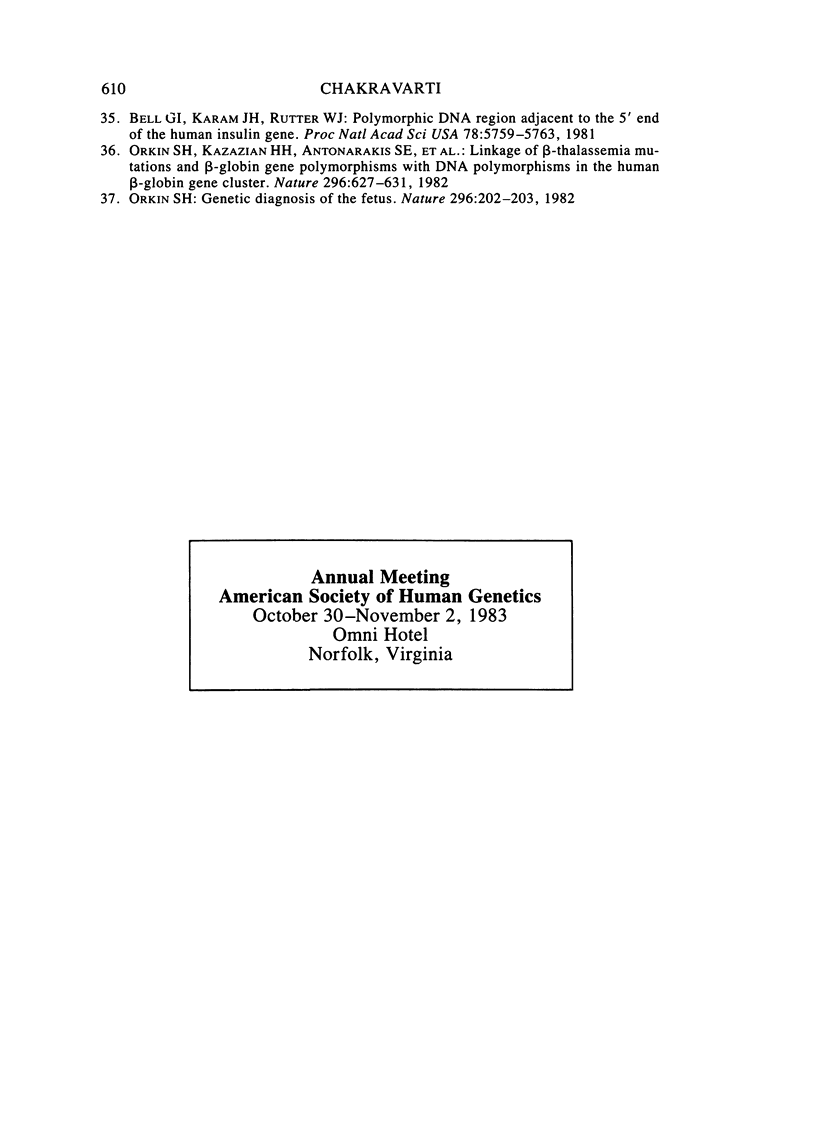
Selected References
These references are in PubMed. This may not be the complete list of references from this article.
- Antonarakis S. E., Boehm C. D., Giardina P. J., Kazazian H. H., Jr Nonrandom association of polymorphic restriction sites in the beta-globin gene cluster. Proc Natl Acad Sci U S A. 1982 Jan;79(1):137–141. doi: 10.1073/pnas.79.1.137. [DOI] [PMC free article] [PubMed] [Google Scholar]
- Bell G. I., Karam J. H., Rutter W. J. Polymorphic DNA region adjacent to the 5' end of the human insulin gene. Proc Natl Acad Sci U S A. 1981 Sep;78(9):5759–5763. doi: 10.1073/pnas.78.9.5759. [DOI] [PMC free article] [PubMed] [Google Scholar]
- Beutler E., Kuhl W., Johnson C. A common mutant EcoRI restriction endonuclease site in the 5' flanking portion of the human alpha-globin gene. Proc Natl Acad Sci U S A. 1981 Nov;78(11):7056–7058. doi: 10.1073/pnas.78.11.7056. [DOI] [PMC free article] [PubMed] [Google Scholar]
- Biggs R., Rizza C. R. The sporadic case of haemophilia A. Lancet. 1976 Aug 28;2(7983):431–433. doi: 10.1016/s0140-6736(76)92523-x. [DOI] [PubMed] [Google Scholar]
- Bundey S., Carter C. O., Soothill J. F. Early recognition of heterozygotes for the gene for dystrophia myotonica. J Neurol Neurosurg Psychiatry. 1970 Jun;33(3):279–293. doi: 10.1136/jnnp.33.3.279. [DOI] [PMC free article] [PubMed] [Google Scholar]
- Chakravarti A., Nei M. Utility and efficiency of linked marker genes for genetic counseling. II. Identification of linkage phase by offspring phenotypes. Am J Hum Genet. 1982 Jul;34(4):531–551. [PMC free article] [PubMed] [Google Scholar]
- Edgell C. J., Kirkman H. N., Clemons E., Buchanan P. D., Miller C. H. Prenatal diagnosis by linkage: hemophilia A and polymorphic glucose-6-phosphate deydrogenase. Am J Hum Genet. 1978 Jan;30(1):80–84. [PMC free article] [PubMed] [Google Scholar]
- Feldenzer J., Mears J. G., Burns A. L., Natta C., Bank A. Heterogeneity of DNA fragments associated with the sickle-globin gene. J Clin Invest. 1979 Sep;64(3):751–755. doi: 10.1172/JCI109519. [DOI] [PMC free article] [PubMed] [Google Scholar]
- Filippi G., Rinaldi A., Palmarino R., Seravalli E., Siniscalco M. Linkage disequilibrium for two X-linked genes in Sardinia and its bearing on the statistical mapping of the human X chromosome. Genetics. 1977 May;86(1):199–212. doi: 10.1093/genetics/86.1.199. [DOI] [PMC free article] [PubMed] [Google Scholar]
- Firshein S. I., Hoyer L. W., Lazarchick J., Forget B. G., Hobbins J. C., Clyne L. P., Pitlick F. A., Muir W. A., Merkatz I. R., Mahoney M. J. Prenatal diagnosis of classic hemophilia. N Engl J Med. 1979 Apr 26;300(17):937–941. doi: 10.1056/NEJM197904263001701. [DOI] [PubMed] [Google Scholar]
- Francke U., Felsenstein J., Gartler S. M., Migeon B. R., Dancis J., Seegmiller J. E., Bakay F., Nyhan W. L. The occurrence of new mutants in the X-linked recessive Lesch-Nyhan disease. Am J Hum Genet. 1976 Mar;28(2):123–137. [PMC free article] [PubMed] [Google Scholar]
- Gibson S. L., Ferguson-Smith M. A. The use of genetic linkage in counselling families with dystrophia myotonica. Clin Genet. 1980 Jun;17(6):443–448. doi: 10.1111/j.1399-0004.1980.tb00178.x. [DOI] [PubMed] [Google Scholar]
- Kan Y. W., Dozy A. M. Antenatal diagnosis of sickle-cell anaemia by D.N.A. analysis of amniotic-fluid cells. Lancet. 1978 Oct 28;2(8096):910–912. doi: 10.1016/s0140-6736(78)91629-x. [DOI] [PubMed] [Google Scholar]
- Kan Y. W., Dozy A. M. Polymorphism of DNA sequence adjacent to human beta-globin structural gene: relationship to sickle mutation. Proc Natl Acad Sci U S A. 1978 Nov;75(11):5631–5635. doi: 10.1073/pnas.75.11.5631. [DOI] [PMC free article] [PubMed] [Google Scholar]
- Kan Y. W., Lee K. Y., Furbetta M., Angius A., Cao A. Polymorphism of DNA sequence in the beta-globin gene region. Application to prenatal diagnosis of beta 0 thalassemia in Sardinia. N Engl J Med. 1980 Jan 24;302(4):185–188. doi: 10.1056/NEJM198001243020401. [DOI] [PubMed] [Google Scholar]
- Kazazian H. H., Jr, Phillips J. A., 3rd, Boehm C. D., Vik T. A., Mahoney M. J., Ritchey A. K. Prenatal diagnosis of beta-thalassemias by amniocentesis: linkage analysis using multiple polymorphic restriction endonuclease sites. Blood. 1980 Nov;56(5):926–930. [PubMed] [Google Scholar]
- Lewontin R C. The Interaction of Selection and Linkage. I. General Considerations; Heterotic Models. Genetics. 1964 Jan;49(1):49–67. doi: 10.1093/genetics/49.1.49. [DOI] [PMC free article] [PubMed] [Google Scholar]
- McCurdy P. R. Use of genetic linkage for the detection of female carriers of hemophilia. N Engl J Med. 1971 Jul 22;285(4):218–219. doi: 10.1056/NEJM197107222850409. [DOI] [PubMed] [Google Scholar]
- Nei M., Li W. H. Non-random association between electromorphs and inversion chromosomes in finite populations. Genet Res. 1980 Feb;35(1):65–83. doi: 10.1017/s001667230001394x. [DOI] [PubMed] [Google Scholar]
- Nei M. Proportion of informative families for genetic counseling with linked marker genes. Jinrui Idengaku Zasshi. 1979 Sep;24(3):131–142. doi: 10.1007/BF01888684. [DOI] [PubMed] [Google Scholar]
- Orkin S. H. Genetic diagnosis of the fetus. Nature. 1982 Mar 18;296(5854):202–203. doi: 10.1038/296202a0. [DOI] [PubMed] [Google Scholar]
- Orkin S. H., Kazazian H. H., Jr, Antonarakis S. E., Goff S. C., Boehm C. D., Sexton J. P., Waber P. G., Giardina P. J. Linkage of beta-thalassaemia mutations and beta-globin gene polymorphisms with DNA polymorphisms in human beta-globin gene cluster. Nature. 1982 Apr 15;296(5858):627–631. doi: 10.1038/296627a0. [DOI] [PubMed] [Google Scholar]
- Phillips J. A., 3rd, Hjelle B. L., Seeburg P. H., Zachmann M. Molecular basis for familial isolated growth hormone deficiency. Proc Natl Acad Sci U S A. 1981 Oct;78(10):6372–6375. doi: 10.1073/pnas.78.10.6372. [DOI] [PMC free article] [PubMed] [Google Scholar]
- Phillips J. A., 3rd, Panny S. R., Kazazian H. H., Jr, Boehm C. D., Scott A. F., Smith K. D. Prenatal diagnosis of sickle cell anemia by restriction and endonuclease analysis: HindIII polymorphisms in gamma-globin genes extend test applicability. Proc Natl Acad Sci U S A. 1980 May;77(5):2853–2856. doi: 10.1073/pnas.77.5.2853. [DOI] [PMC free article] [PubMed] [Google Scholar]
- Renwick J. H. Widening the scope of antenatal diagnosis. Lancet. 1969 Aug 16;2(7616):386–386. doi: 10.1016/s0140-6736(69)92738-x. [DOI] [PubMed] [Google Scholar]
- Schrott H. G., Karp L., Omenn G. S. Prenatal prediction in myotonic dystrophy: guidelines for genetic counseling. Clin Genet. 1973;4(1):38–45. doi: 10.1111/j.1399-0004.1973.tb01120.x. [DOI] [PubMed] [Google Scholar]


